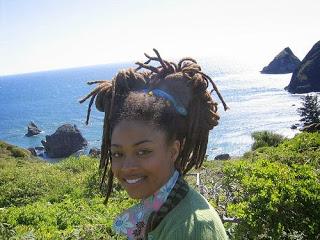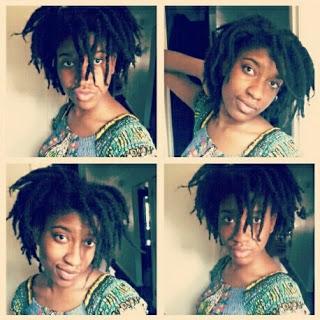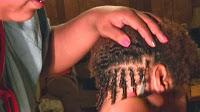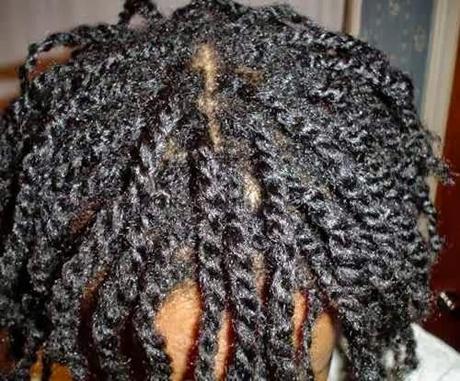Organic/ Free Form Locs

 These are the types of locks that require the least amount of attention and manipulation. Most often associated with the Rastafarian culture, they are created by allowing the hair to become "matted" and to lock independently. The hair can be washed but that is the most manipulation that the hair will endure. By leaving the hair as-is, this allows the hair to naturally (or organically) "mat" and lock without interference, tightening or maintenance. These types of locks result in various sizes and shapes of locks over the head.
These are the types of locks that require the least amount of attention and manipulation. Most often associated with the Rastafarian culture, they are created by allowing the hair to become "matted" and to lock independently. The hair can be washed but that is the most manipulation that the hair will endure. By leaving the hair as-is, this allows the hair to naturally (or organically) "mat" and lock without interference, tightening or maintenance. These types of locks result in various sizes and shapes of locks over the head.Cultivated Locs


- Comb Coil locks: These types of locks are usually started by using a rat-tail comb to section the hair and twist. Usually, all of the twists are uniformed of the same size and pattern. These types of locks usually take the longest to cultivate because the comb coils unravel fairly easy, especially when the hair is washed or becomes wet.
- SisterLocks®: Created by Dr. Joanne Cornwell, these locks use a special, patented locking pattern and tool to achieve a tiny lock that allows for a bit more "versatility" in styling. These locks are lightweight and are achieved by a trained, certified SisterLocks® consultant.
Braided/ Twisted Locs
-
Nappy Locks™: By using the special Nappy Locks™ tool, these locks are created by locking the hair in a special pattern that reduces the chances of them unraveling. This method also does not involve using any types of moisturizers, locking butters, waxes or gels and can be created from small to relatively large locking sizes.
- Two Strand Twist Locks: Locks can also be started on hair that is tightly coiled by "double strand twisting" the hair and continuing to allow the hair to grow in, continuously twisting over the initial hair that was two-strand twisted.

All of the aforementioned methods to starting your locks have been proved to be effective. The maintenance and time it takes for your locks to reach maturity will vary depending on the method you choose. As with all things that are worth having, transitioning to locks is definitely a journey that's worth waiting for! It is one that requires patience and self-control in keeping your hands out of your hair until your locks have fully matured.
What methods have some of you used to start your locks?
Images found via Tumblr, YouTube, khamitkinks and Pinterest.

